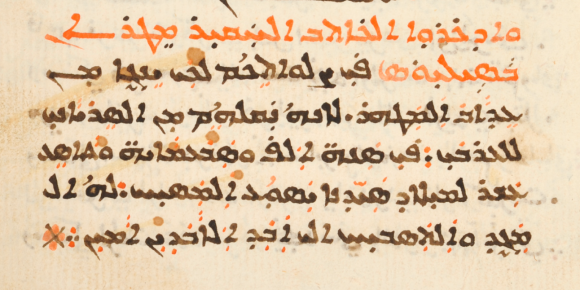Over thirty specialists in Indo-European linguistics have contributed this elegant volume in honor of Prof. Sasha Lubotsky of Leiden University. Besides giving an excellent snapshot of the research currently being undertaken by his students and colleagues at that institution, Farnah contains contributions from well-known scholars across the world covering topics in Tocharian, Germanic, Slavic, Indo-Iranian, and Anatolian linguistics, to name a few.
Click here to see a full list of the contributions.
Table of Contents
-
- Peter C. Bisschop: Vedic Elements in the Pāśupatasūtra
- Václav Blažek: The Case of Tocharian ‘silver’: Inherited or Borrowed?
- Michiel de Vaan: The Noncanonical Use of Instrumental Plurals in Young Avestan
- Desmond Durkin-Meisterernst: Sogdian Plurals in the Vessantara Jātaka
- Jost Gippert: A Middle Iranian Word Denoting an Office-Holder
- Stephanie W. Jamison: The Vedic Perfect Imperative and the Status of Modal Forms to Tense-Aspect Stems
- Michael Janda: Vedisch dhénā-: Bedeutung und Etymologie
- Jay H. Jasanoff: The Phonology of Tocharian B okso ‘ox’
- Jared Klein: Syncretism in Indo-European: A Natural History
- Alwin Kloekhorst: The Origin of the Hittite ḫi-Conjugation
- Werner Knobl: Das Demonstrativpronomen ETÁD im Ṛgveda
- Petr Kocharov: A Comment on the Vocalization of Word-initial
and Medial Laryngeals in Armenian - Frederik Kortlandt: The Indo-European k-Aorist
- Guus Kroonen: Lachmann’s Law, Thurneysen’s Law, and a New Explanation of the PIE no-Participles
- Leonid Kulikov: Vedic āhanás– and Its Relatives/Cognates within and outside Indo-Iranian
-
- Martin Joachim Kümmel: The Survival of Laryngeals in Iranian
-
- Rosemarie Lühr: Prosody in Indo-European Corpora
-
- Hrach Martirosyan: Armenian Andndayin ōj and Vedic Áhi-Budhnyà– ‘Abyssal Serpent’
-
- Ranko Matasović: Iranian Loanwords in Proto-Slavic: A Fresh Look
-
- H. Craig Melchert: Semantics and Etymology of Hittite takš–
-
- Benedicte Nielsen Whitehead: PIE *gwh3-éu– ‘cow’
Alan J. Nussbaum, A Dedicatory Thigh: Greek μηρὀς and μῆρα Once Again
- Benedicte Nielsen Whitehead: PIE *gwh3-éu– ‘cow’
-
- Norbert Oettinger: Vedisch Vivásvant– und seine avestische Entsprechung
-
- Birgit Anette Olsen: The Development of Interconsonantal Laryngeals in Indo-Iranian and Old Avestan ząθā ptā
-
- Michaël Peyrot: Tocharian B etswe ‘mule’ and Eastern East Iranian
-
- Georges-Jean Pinault: New Look at Vedic śám
-
- Tijmen Pronk: Old Church Slavonic (j)utro, Vedic uṣár– ‘daybreak, morning’
-
- Velizar Sadovski: Vedic and Avestan Parallels from Ritual Litanies
and Liturgical Practices I
- Velizar Sadovski: Vedic and Avestan Parallels from Ritual Litanies
-
- George Starostin: Typological Expectations and Historic Reality: Once Again on the Issue of Lexical Cognates between Indo-European and Uralic
-
- Lucien van Beek: Greek πέδιλον ‘sandal’ and the Origin of the e-Grade in PIE ‘foot’
- Michael Weiss: Veneti or Venetes? Observations on a Widespread Indo-European Tribal Name

 Morano, Enrico, Elio Provasi & Adriano V. Rossi (eds.). 2017.
Morano, Enrico, Elio Provasi & Adriano V. Rossi (eds.). 2017. 
 Barbati, Chiara. 2016.
Barbati, Chiara. 2016.  Gholami, Saloumeh. 2014.
Gholami, Saloumeh. 2014.
 Krasnowolska, Anna & Renata Rusek-Kowalska (eds.). 2015.
Krasnowolska, Anna & Renata Rusek-Kowalska (eds.). 2015.  Jügel, Thomas. 2015.
Jügel, Thomas. 2015.